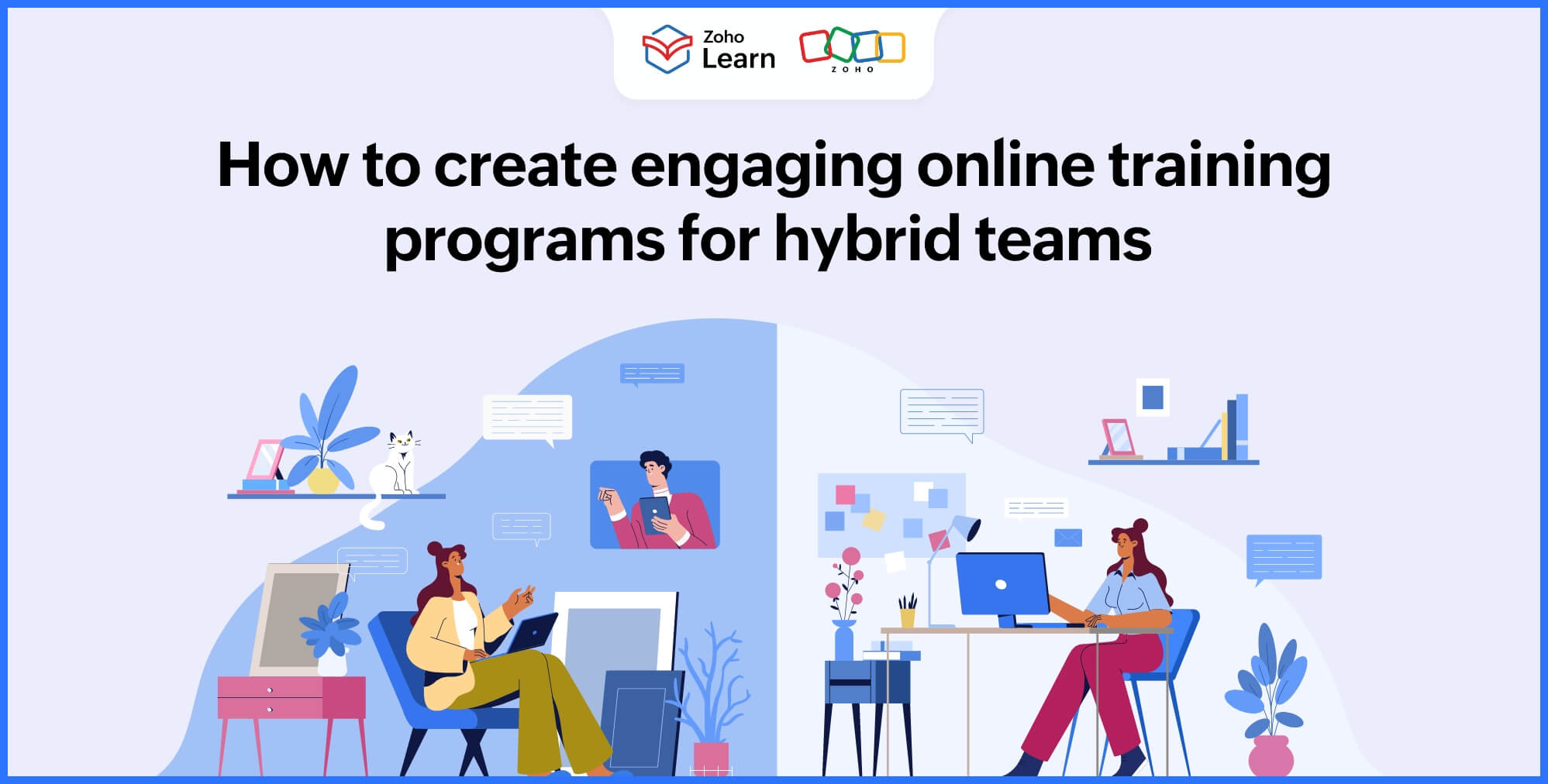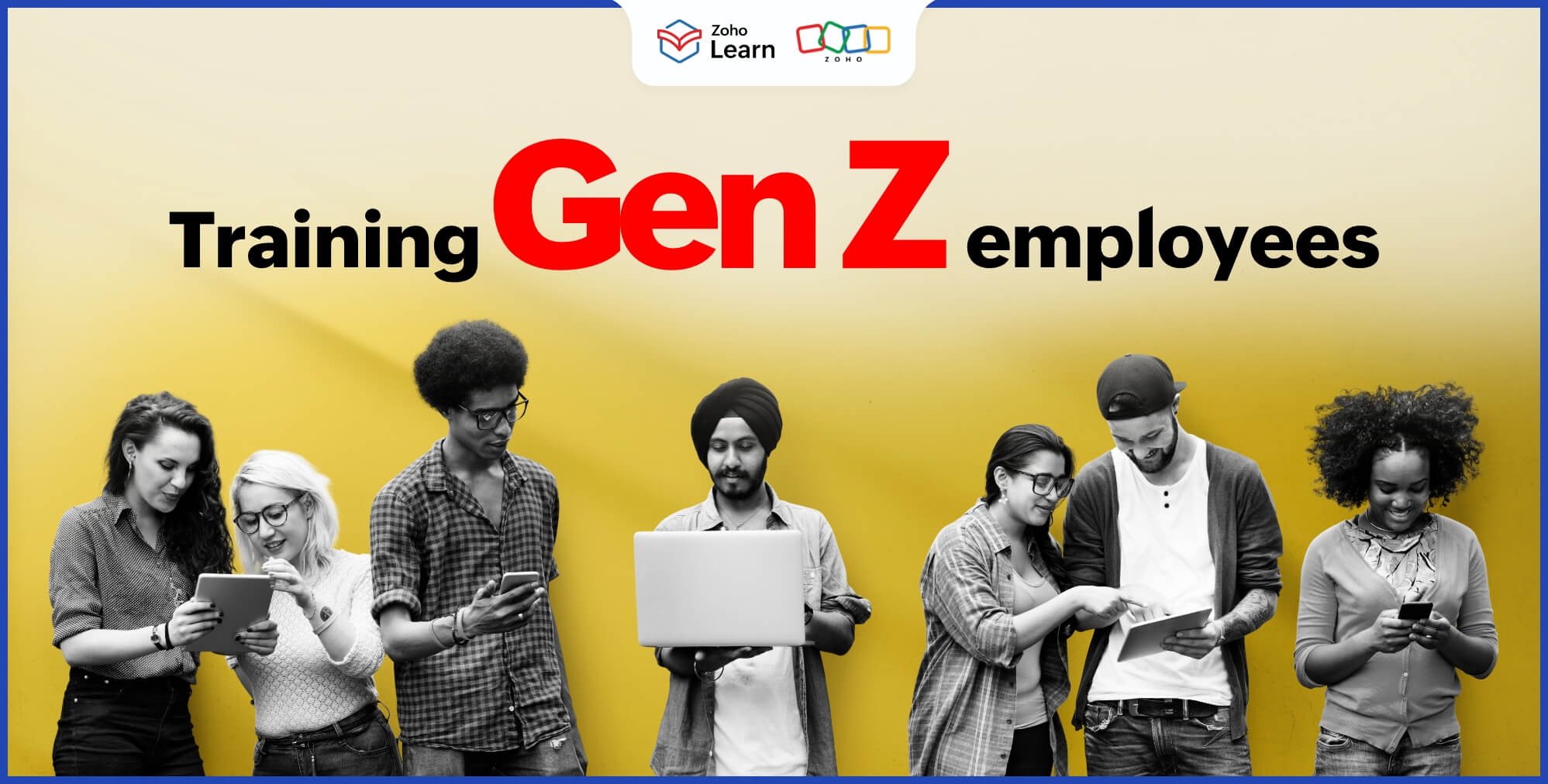The top learning and development trends for 2024
- Last Updated : May 29, 2024
- 696 Views
- 5 Min Read

As organizations navigate a generational shift in workforce demographics, they’re compelled to reassess their traditional approaches to learning and development (L&D) programs. The new generation of employees is driving this change with their expectations and preferences, and bring a distinct set of values and learning styles with them. They’re looking for dynamic and personalized learning experiences that cater to their unique needs and interests.
As technology continues to advance, organizations have access to an array of tools and platforms that can revolutionize the delivery and consumption of learning. From AI-driven adaptive learning systems to immersive virtual reality simulations, these technological innovations offer limitless possibilities for creating engaging and interactive training experiences. In this article, we’ll explore the new trends in training and development that help organizations adapt to the evolving modern workplace.
1. Peer-to-peer learning
The generation now entering the workforce value peer-to-peer learning because they prioritize collaborative and social aspects in their learning journey. They seek opportunities for group activities and interactive learning facilitated by digital tools. They seek mentorship from experienced individuals in their field to enrich their understanding.
Integrating peer-to-peer learning into training through discussions, forums, and comments facilitates knowledge exchange in a relatable and accessible manner. Colleagues can leverage real-life examples and share practical insights. It also boosts employee engagement by fostering a sense of value and empowerment among individuals who actively contribute to their peers' growth and development.
2. Hybrid learning
The modern workforce is transitioning towards a hybrid model that prioritizes flexible scheduling and opportunities to work from home while still valuing in-person interaction. In a hybrid learning environment, learners engage in a mix of in-person classroom sessions and virtual learning activities. Hybrid learning models cater to the evolving work environment and employees’ diverse learning preferences. They also enhance the accessibility and flexibility of training programs. They accommodate different learning styles and schedules, allowing employees to interact with training materials at their preferred pace and convenience.
3. Microlearning
Microlearning offers several benefits, including increased engagement, retention, and accessibility. By delivering content in small, bite-sized modules, organizations can cater to the shorter attention spans of modern learners and accommodate their busy schedules. Microlearning allows employees to access training materials whenever and wherever they need them. This on-demand access to relevant and concise learning resources enhances knowledge retention and application. Microlearning also incorporates spaced repetition techniques that further strengthen employees’ learning and skill development over time.
4. Immersive learning experiences
Modern learners are looking for immersive skill-building experiences to build the breadth and depth of skills needed for their future success. It provides them with a more engaging and impactful training environment with opportunities to practice skills in a safe and controlled setting, without the risk of real-world consequences. This hands-on approach enhances knowledge retention and application as learners actively engage with the material through interactive simulations.
5. AI for personalized content
An emerging trend in e-learning involves leveraging AI to deliver personalized content tailored to the specific needs and preferences of learners. Through analysis of learner data and behavior, AI algorithms can suggest relevant learning materials, adjust learning paths, adapt learning pathways, and provide targeted feedback in real time. This personalized approach enhances engagement and motivation because learners receive content that’s directly applicable to their roles and interests. AI-driven tools allow organizations to track learner progress and performance more effectively and identify areas for improvement and optimization within their training programs.
6. Internal upskilling and reskilling
Prioritizing internal upskilling and reskilling initiatives is essential for organizations to safeguard their future and facilitate ongoing employee growth and advancement. As technology evolves and job roles change, employees must acquire new skills and competencies to remain relevant and competitive in the workforce. Internal upskilling and reskilling programs empower employees to adapt to changing demands and seize new opportunities within the organization. By offering accessible and targeted training opportunities, organizations can retain top talent, boost employee morale and loyalty, and foster a culture of innovation and adaptability.
7. Gamification
Incorporating gamification into L&D programs enhances participation among learners. By applying gaming principles such as challenges, rewards, and competition, organizations can transform training into a more interactive and enjoyable experience. Gamification encourages healthy competition and collaboration because learners strive to achieve goals and earn rewards within the training environment. This competitive element drives intrinsic motivation and fosters a sense of achievement and progression.
8. Virtual reality
Virtual reality (VR) offers a unique and immersive learning experience that simulates real-world scenarios and environments. Using VR technology, organizations can offer practical training experiences in a secure environment, eliminating the necessity for physical resources or equipment. Learners engage in realistic and interactive skill practice and procedures to boost knowledge retention and skill attainment. Companies can customize VR training to meet the specific needs and objectives of different roles and industries, making it a versatile and scalable solution for workforce development.
9. Environment and social training
Modern employees increasingly prioritize environmental sustainability, climate change, and other societal concerns. These issues foster a sense of community and belonging among employees, uniting them in collaborative efforts towards shared goals and values. By actively addressing topics like sustainability, diversity, and inclusion, organizations foster a socially responsible and ethically conscious workplace culture. Employees feel connected to a greater purpose and are motivated to contribute positively to their workplace and society as a whole. This enhances employee morale and strengthens the organization's reputation and impact.
10. Mobile learning
Mobile learning offers flexibility, accessibility, and convenience for learners, allowing them to access training materials anytime, anywhere, using their smartphones or other mobile devices. By leveraging mobile learning technologies, organizations can overcome barriers such as time constraints and geographical limitations. Mobile learning accommodates the on-the-go lifestyles of modern learners, providing opportunities for learning and skill development during breaks or while they’re on the move.
Wrapping up
Each of these learning trends offers distinct benefits for organizations aiming to enhance their L&D initiatives and foster a workforce that is adaptable, empowered, and engaged. Selecting the most suitable trends in corporate training for an organization depends on understanding its specific needs and the dynamics of its workforce. By embracing these trends and integrating them into their training approaches, organizations can stay ahead of the curve and drive sustainable growth and success in the modern workplace.


